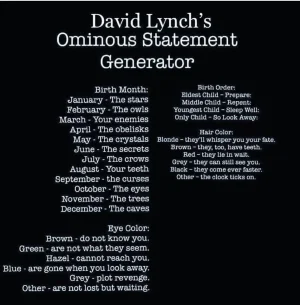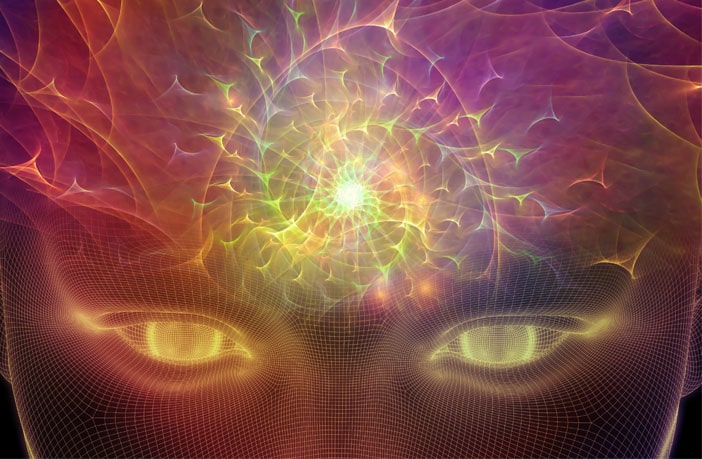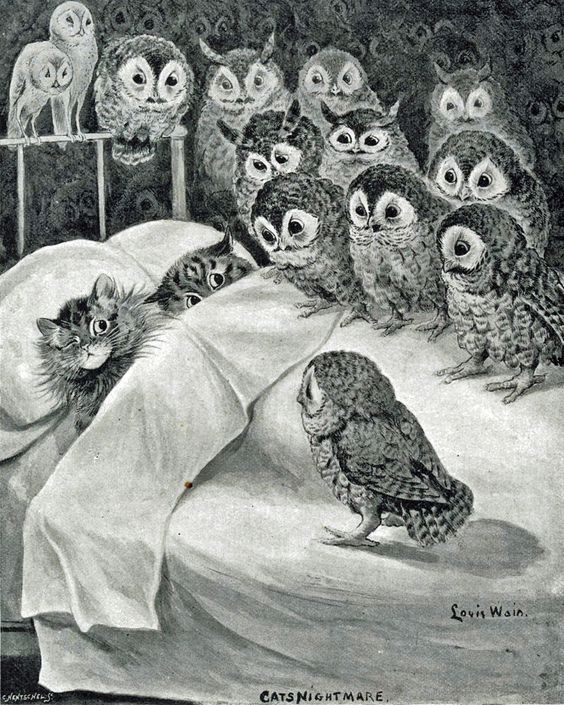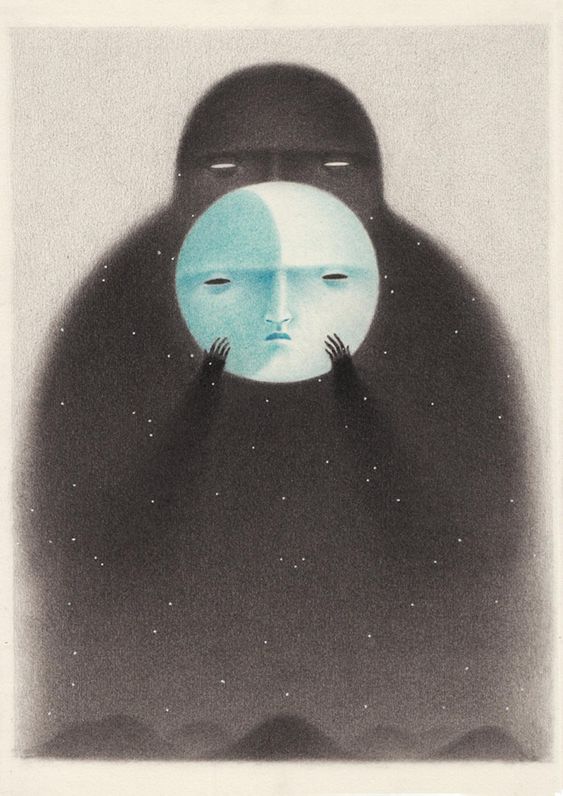Quantum Physics: The Physics of Dreaming
This article, edited for brevity, contains key excerpts from a much larger essay penned by Paul Levy.
You can find the entire article at his Awaken in the Dream website.
These excerpts focus upon quantum theory and the hard problem of consciousness.
As we previously posted in our
March 2019 monthly reference article list, observation has been proven to be subjective via quantum experimentation.
So the question must be asked, are we interpreting reality subjectively as it is presented to us or are we creating our own reality every moment?
Allen presents information that begs exploration of this question and many more.
“What we call reality is simply a theory and internalized mental model which is at bottom a way of looking at the world,
rather than a form of absolutely true knowledge of how the world ‘really’ is.
However we view it, we can’t get around the fact that we are participating in creating our experience of the universe.”
– Paul Levy, Quantum Physics: The Physics of Dreaming
Key Excerpts from Quantum Physics: The Physics of Dreaming
In discovering the quantum, physics has indisputably encountered consciousness.
Quantum physics is pointing out, in unequivocal terms, that the study of the universe and the study of consciousness are inseparably linked, and that ultimate progress in the one will be impossible without progress in the other.
The discovery of the quantum nature of our universe is a seismic, tectonic shift in the very foundation of physics and the roots of our scientific worldview, a change so momentous that it can literally transform the course of human history.
The founders of quantum physics, people such as Niels Bohr, Werner Heisenberg and Erwin Schrodinger famously argued that quantum physics is first and foremost a new way of thinking.
Quantum theory is teaching us that implicit in our very thinking are certain flaws and misperceptions that, unseen and taken for granted, unnecessarily limit our ability to apprehend the nature of nature, including our own.
Quantum physics is the most subversive of all the sciences, having created a “reality crisis” in the field of physics such that the very idea of “reality” itself has been undermined.
Physicists have, in their attempts at grasping its implications, lost their grip on reality, finding nothing to hold onto.
Exploring the farthest reaches of the outside micro-world brings us right back to our inner selves.
One third of our economy involves products based on quantum mechanics – things such as computers and the Internet, lasers, MRI’s, DVD’s, microwaves, mobile phones, silicon chips, semiconductors, superconductors and nuclear energy.
And yet, even with the huge impact quantum physics has had on all of our lives, this effect is infinitesimally small compared with what it will be when more of us recognize and internalize the implications of what it is revealing to us about the nature of reality as well as of ourselves.
This is the deep philosophical question that begs to be answered – what does quantum physics mean?
And do we use the discoveries of quantum physics for the betterment of our species, or to destroy ourselves?
Quantum theory reflects back to us that the choice is truly ours.
Participatory Universe
Quantum physics forever shattered the idea of there being an objectively existing world.
It is ironic that physics, long considered the most “objective” of all the sciences, in pursuing its dedicated quest to understand the deep nature of the material universe, has dispelled the very notion of an objective universe.
Quantum theory has opened up the door to a profoundly new vision of the cosmos, where the observer, the observed and the act of observation are inseparably united.
In quantum physics, we are no longer passive witnesses of the universe, but rather, we unavoidably find ourselves in the new role of active participants who in-form, give shape to and in some mysterious sense “create” the very universe we are interacting with.
In essence, consciousness has entered into the physics laboratory, and physicists are not quite sure what to make of this.
Coming to terms and facing up to the intrusion of consciousness into their hallowed halls is forcing physics to come to terms with questions of meta-physics, which for most physicists is not what they signed up for.
Quantum physics is itself the greatest threat to the underlying metaphysical assumptions of “scientific materialism,” a perspective which assumes that there is an independently existing, objective material world that is separate from the observer.
The quantum revolution has revealed that the classical worldview was something that existed entirely within the minds of a certain strain of European humanity that became reified into an orthodox creed and held the mind of modern humanity in a prison of its own making, as if humanity had become spellbound.
Physicists themselves haven’t fully comprehended and don’t quite know what to make of what they have unwittingly stumbled upon.
They have been forced to wrestle, not just intellectually but emotionally, existentially and spiritually with their own discoveries in the quantum realm.
Quantum theory has pushed its adherents to the very edge of the unknown, both out in the world and within themselves.
In trying to understand nature, physics is helping us discover our own nature.
In re-visioning our idea of the world we live in, we change our perception of the possibilities available in our world, thus opening up previously unimagined pathways of creative and effective action.
“Objective reality” is now an unexamined implicit assumption, an idea in our mind.
What most of us call objective reality is simply an interpretation of data whose meaning is agreed upon by the majority, what can be called a “consensus reality.”
Reality
Quantum theory brings the question to the fore: Are we discovering reality, or creating it?
And if we are, at least in part, creating what we call reality, what are we creating it out of?
According to our subjective experience the world certainly seems real enough, apparently contradicting what quantum physics is telling us about the world’s lack of inherent, objective reality.
In the overwhelming majority of cases, the world behaves “as if” it has an independent reality, which furthers our visceral belief in objective reality.
Yet objectivity itself is a recent human phenomenon.
The Scientific Revolution was a deepening of our powers of reason, a flowering of human creativity and a breakthrough for humanity, helping us to explore our world in ever-more profound and ingenious ways.
From another point of view, the Scientific Revolution was also the onset of a particular form of madness.
It started as a new worldview that was revolutionary in its power; yet it contained a subtle error that solidified into a widespread delusion which has over time profoundly enabled the collective psychosis that our species finds itself in.
An essential feature of this madness is the severing between the subject and object, the observer and the observed, as if the scientific imagination thought that in its intellectual examination of the world, it wasn’t part of, participating in, and thereby affecting that which it was investigating.
Seeing the world as separate from ourselves has become the prevailing and institutionalized worldview of “the academy,” a viewpoint that takes the heart, soul and “magic” out of the world, reducing it to a dead, inanimate, insensate domain.
This was done in pursuit of the ideal of objectivity, which was gradually elevated to the level of an absolute truth about the nature of reality.
This approach worked remarkably well when it came to dealing with the macroscopic world, enabling unprecedented levels of control to be exerted over the physical world.
But an unseen cost was being incurred by the human spirit.
Increasingly enthralled by science’s ever-growing achievements and technological wizardry, few questioned whether these very advances might at the same time be leading humanity astray from essential aspects of the true nature of our being, slowly dehumanizing our species in the process.
In contrast, quantum theory implies that immaterial factors having more of the nature of images and ideas are the blue-print for our universe, actually in-forming and shaping the evolution of the universe as a whole.
It is as if the universe itself is conspiring with us to help us awaken to its, and our nature, and quantum physics is the theoretical and experimental “instrument” for this deeper insight to reveal itself. S
een as a symbol crystallizing out of the dreamlike nature of reality, quantum physics is revealing to us that we don’t live in the mechanistic, Cartesian world of classical physics, but rather, inhabit an enchanted world not separate from our mind’s creative imagination.
What we call reality is simply a theory and internalized mental model which is at bottom a way of looking at the world, rather than a form of absolutely true knowledge of how the world “really” is.
It is important not to conflate reality with our theories, not to confuse the map with the territory.
Our best models are no more than aids to our imagination, by no means are they complete reflections of the nature of reality.
“If quantum mechanics hasn’t profoundly shocked you, you haven’t understood it yet.”
– Neils Bohr
The Laws of Physics
Quantum physics has raised the question, is the ever-evolving universe like a work of art in progress, making up its laws as it goes along?
The idea that the laws which inform the functioning of reality spring into manifestation out of nothingness fully formed is a nonsensical, preposterous idea.
As one quantum physicist comments, “The laws of physics were not installed in advance by a Swiss watchmaker.”
They must have somehow come into being.
The central and all-encompassing role of the observer in quantum mechanics, what has been referred to as the “magic ingredient,” is the most important clue we have regarding the construction of the universe.
The universe gives rise to meaning-establishing observer-participants, who, in developing the ideas of quantum mechanics, grant a meaningful existence to the universe.
The construction of the universe is such that the observer is as essential to the creation of the universe as the universe is essential to the creation of the observer.
In a world without a built-in purpose, quantum theory “promotes” the observer to the definer of reality and generator of meaning, which is essentially a creator of distinctions, a primordially creative role.
However we view it, we can’t get around the fact that we are participating in creating our experience of the universe.
Quantum physics is riddled with paradox to its core.
Thinking “quantum-logically,” we are able to hold paradox in a new way; instead of needing one or the other viewpoint to be true, in a higher form of logic, we can hold seemingly contradictory statements together as both being true simultaneously.
This gives new insight into how what may appear to be contradictions at one level can be part of a deeper consistency and completeness from a higher, more inclusive level.
As renowned quantum physicist John Archibald Wheeler once said, “The universe gives birth to consciousness, and consciousness gives meaning to the universe.”
The emergence of consciousness in the universe is as epic and epochal an event in cosmic history as the first big blast of its materialization in the supposed big bang.
In this process of self-cognition, the universe is able to turn back upon itself so as to explore its nature via its various life forms.
In such a self-referential cosmology whose nature is a self-generating feedback loop of pure creativity, we are dreaming up the universe, while at the same time the universe is reciprocally dreaming us up.
The seemingly subjective and objective realities interblend and co-create each other.
As observers, we are participants in the genesis of the universe.
Cosmogenesis
Without observers, there is no existence.
The observer is both a result of an evolutionary process and, in some sense, the cause of its own emergence.
In other words, mind-boggling as it is to contemplate, we may be “observer-participants” playing a role in the genesis of the cosmos in this very moment. We live in a universe that is capable not only of harboring life, but of cultivating life which is intelligent enough to ask about its origins.
In our observing and reflecting upon our universe we are actually changing the universe’s idea of itself.
Through us, the universe questions itself and tries out various answers on itself in an effort – parallel to our own – to decipher its own being.
Quantum physics has discovered that there are no elementary particles, no fundamental “building blocks” of reality.
“The atoms or elementary particles themselves form a world of potentialities or possibilities rather than one of things or facts.”
They are not located in time or space but in an abstract realm.
Subatomic objects don’t exist as things, but rather, as events, as happenings, as dynamic ever-changing interactive psycho-physical processes.
What these elementary entities “are” and what they “do” are inseparably intertwined.
The aspects of nature represented by quantum theory are converted from elements of “being” to elements of “doing,” which basically replaces the world of material substances with a world populated by actions, events and processes.
In the quantum world, there is no “place” for matter, in the same way that in the classical world there is no “place” for mind.
Classical physics’ theory of a world of matter is converted by quantum physics into a theory of the relationship between matter and mind.
Unveiling a great mystery, quantum physics is pointing out that the ultimate nature of the universe is more mind-like than matter-like.
The quantum universe can be properly conceived of only as an intricately interconnected dynamic whole.
Our universe is an emergent universe in which the whole is greater than the sum of any of its parts can even imagine.
An emergent global property can feed back to influence the individuals who produced it in an interlocking, creativity-generating, self-sustaining and life-supporting feedback loop.
Thus individuals and groups can begin to consciously tap into the energy that makes up the quantum realm – the zero point energy of creation itself – in a way which changes everything.
Our nonlocal universe’s spooky action-at-a-distance is an expression of the fundamental, indivisible wholeness of the universe, which is radically different from classical physics’ previous conception of the universe as composed of separate parts.
At the quantum level, there is the radically new notion of intrinsic unbroken wholeness, a seamless interconnectedness among all of the universe’s seemingly separate parts.
At the quantum level, the universe is “one” with itself.
A Physics of Possibilities
Quantum entities exist in a realm of potentiality, in what is called a state of “superposition,” which is to say they hover in a ghostly state between existence and nonexistence, existing in all possible states up until the moment they are observed.
Not existing in space-time, their appearance in space-time at the moment of observation is a quantum event in which an atemporal process manifests in time.
Everything ultimately exists in a state of open-ended potential.
In the transition from the random uncertainty of the quantum realm, where particles ceaselessly spring into and out of existence, to the seeming solidity and orderly certainty of our everyday world, the question naturally arises, where is this boundary between the quantum world, where things don’t actually exist in a real way but in a state of potentiality, and our everyday world, where things at least appear to exist in a solid-seeming way?
Quantum theory implies that the whole universe – including ourselves – is recreated and recreating itself anew every based on how we are dreaming it up.
What we experience is not external reality, but our interaction with what our minds construe to be an external reality.
Quantum reality is not subjective, just as it is not objective.
The quantum dimension is the bridge, the intermediate realm between the subjective mental realm “in here” and the seemingly objective world “out there,” somehow coupling the two.
Rather than the quantum realm being illusory, quantum physics points out that the appearance of the macroscopic, conventional world can be likened to a holographic optical illusion produced by the interaction of our sense faculties with quantum reality.
Behind the apparent solidity of everyday objects lies a world of open-ended potentiality.
It is not that the deeper reality is veiled and we can’t know it; rather, there is no deeper, independent reality based on our ordinary conceptions of what this means.
The further we descend down the quantum physics rabbit hole, the more magnificent the plumage of this very strange quantum bird.
In the quantum realm we never end up with things, but always with interactive relationships.
At the quantum level, being and knowing, perception and reality, epistemology and ontology are inextricably entangled.
The viewpoint that is emerging from the cutting edge of quantum physics is that, instead of being an epiphenomenon of matter, consciousness is the ontological ground and driving force of the process of reality itself.
Max Planck, the first person to propose the quantum nature of light and one of the first architects of quantum theory, commenting on what the new physics was revealing to humanity, famously said, “Mind is the matrix of all matter.”
Consciousness is in some mysterious fashion creating the “stuff” of the material world.
The discovery of the quantum observership-based nature of reality represents the first rupture in the armor of the classical chrysalis that has long encased the human mind and fettered the human spirit, tightly holding it in a state of slumber dreaming of a deterministic, clockwork cosmos.
Irreversibly awakening out of its somnambulistic trance, humanity is going through an evolutionary metamorphosis in which it is unfurling its iridescent wings of creative imagination as it flies into the open-ended space of previously undreamt possibilities, releasing itself into the luminous imaginal sky of freedom.
Key Points
- There is no objective reality independent of an observer.
- We live in a participatory universe. The observer affects what is observed by the mere act of observing.
- Quantum entities exist in a multiplicity of simultaneous potential states (called a superposition), hovering in an abstract realm between existence and nonexistence prior to being observed.
- There is no independent quantum entity separate from its properties. Its properties are a function of our observation. This is to say that these quantum entities aren’t real in the way we ordinarily think of something as being real.
- The act of observation is the very act which turns the potentiality of the quantum world into the actuality of the seemingly ordinary world.
- Our act of observation not only changes the present state of the universe, it reaches backwards in time and changes what we can say about the past. This turns our conception of linear time and causality on its head.
- The questions we ask make a difference.
- The universe is a seamless, undivided and instantaneously interconnected whole. This is to say that each part of the universe is interrelated with every other part in an immediate and unmediated way.
- An expression of this wholeness is the universe’s nonlocality, in which every part of the universe is related to and in communication with every other part. Our universe doesn’t play by the typical rules of third-dimensional space and time.
- Quantum entities can jump from one place to another without traversing the path in-between.
- The laws of physics are not written in stone, but are mutable.
- The quantum universe is not separate from consciousness; rather, it is an expression of consciousness. Mind and matter are no longer seen as separate.
- Our ordinary, day-to-day universe is quantum through and through.
- Quantum physics literally changes and transforms our mind, as it introduces a new way of thinking. It also helps us see the world differently, which helps the world to manifest differently.
- Quantum physics is showing us how we ourselves are moment by moment playing a key role in the creation of our experience, as well as in the genesis of the cosmos, in this very moment.
- Significantly altering Descartes’ famous principle, “I think therefore I am,” quantum physics would instead say, “I choose therefore I am.”
- Quantum physics is a revelation in living form: it is showing us the dreamlike nature of our universe.
A pioneer in the field of spiritual emergence, Paul Levy is a wounded healer in private practice, assisting others who are also awakening to the dreamlike nature of reality.
He is the author of
Dispelling Wetiko: Breaking the Curse of Evil (North Atlantic Books, 2013) and
The Madness of George W. Bush: A Reflection of Our Collective Psychosis.
An artist, he is deeply steeped in the work of C. G. Jung, and has been a Tibetan Buddhist practitioner for over thirty years.
Please visit Paul’s website
www.awakeninthedream.com.
You can contact Paul at
paul@awakeninthedream.com; he looks forward to your reflections.
Though he reads every email, he regrets that he is not able to personally respond to all of them.
























